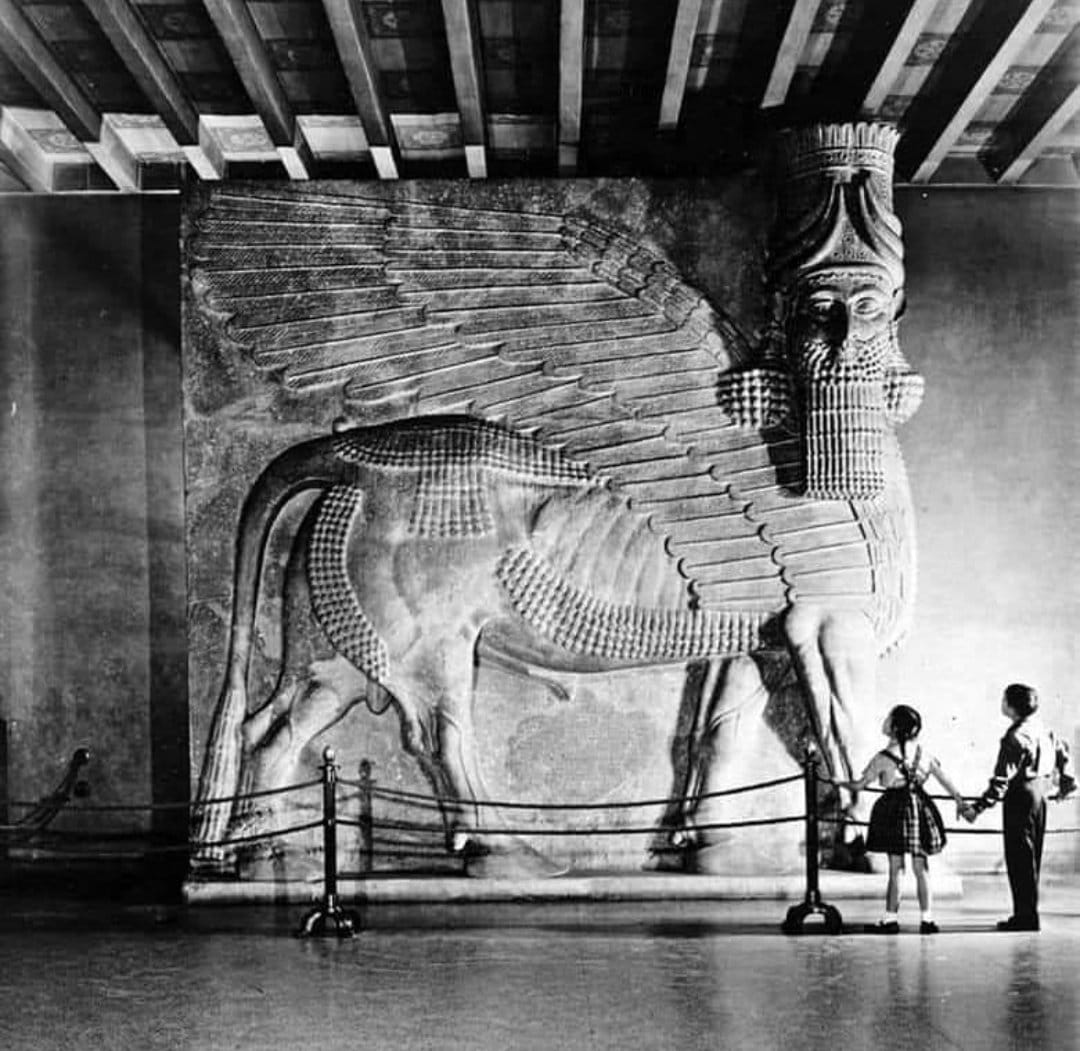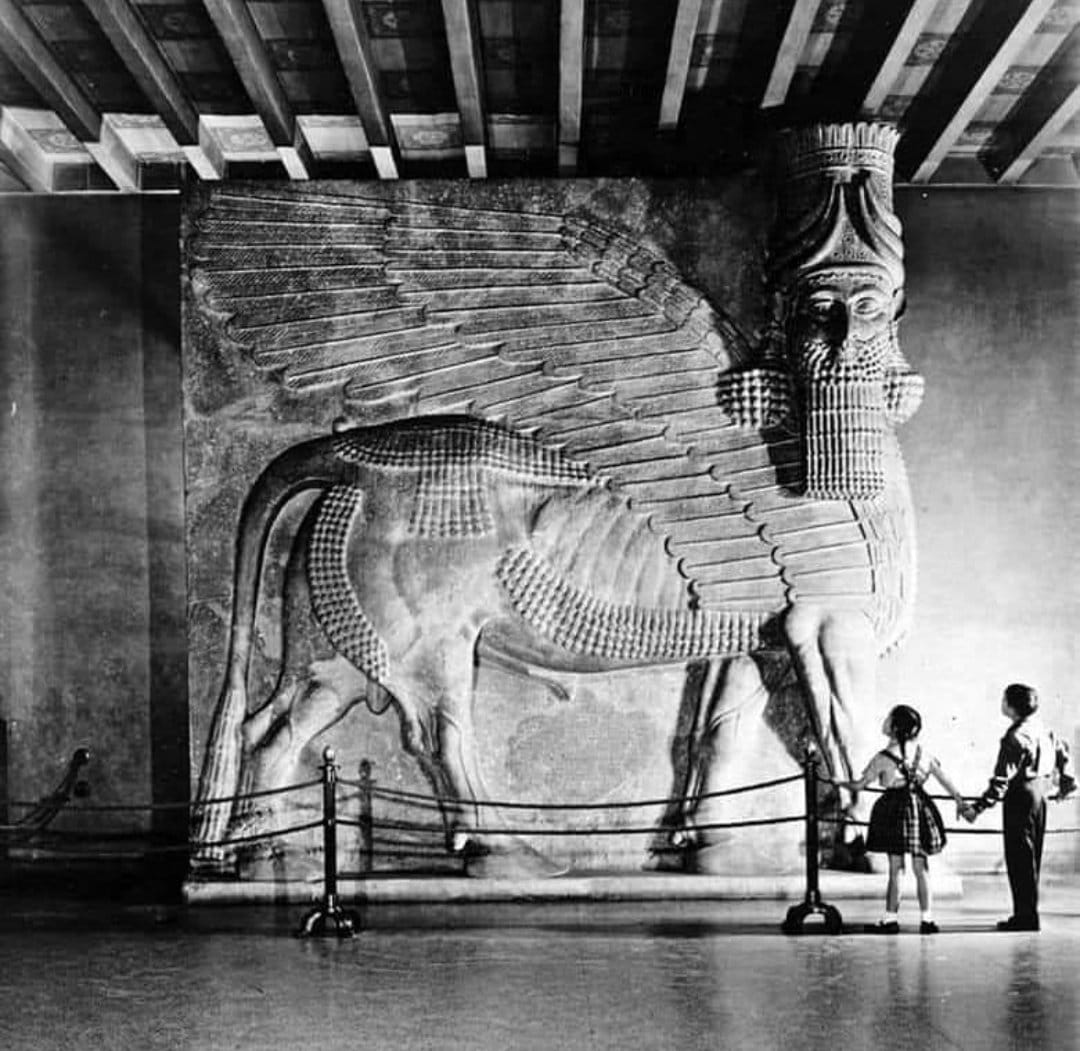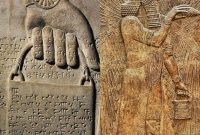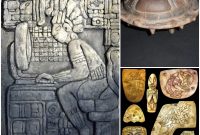In the annals of ancient Mesopotamian history, few artifacts evoke as much awe and wonder as the imposing Lamassu sculptures found in the palace of Assyrian King Sargon II. These magnificent winged bull-man hybrids, known as Lamassu, served as guardians and protectors of the king and his realm, symbolizing the might and authority of the Assyrian Empire. In this article, we delve into the fascinating world of the Lamassu, exploring their significance, symbolism, and enduring legacy in ancient Assyrian culture.

The Origins of the Lamassu: The term “Lamassu” is derived from the Akkadian language and refers to a celestial being or protective deity. These imposing sculptures, which combine the body of a bull or lion with the wings and head of a human, were a common feature of Assyrian palaces and temples during the reign of King Sargon II (r. 722-705 BC). Crafted from limestone or alabaster, the Lamassu served as both architectural embellishments and powerful symbols of divine protection.
Symbolism and Significance: The Lamassu played a crucial role in Assyrian religious and political ideology, symbolizing strength, power, and divine protection. Positioned at the entrances to royal palaces and city gates, these colossal guardians were believed to ward off evil spirits and protect the king and his subjects from harm. Their imposing presence served as a visual reminder of the king’s divine mandate and the might of the Assyrian Empire, instilling fear and awe in all who beheld them.
Iconography and Features: The Lamassu sculptures are characterized by their distinctive combination of animal and human features. Typically depicted with the body of a bull or lion, the Lamassu have muscular torsos adorned with intricate relief carvings and stylized wings that stretch outward in majestic arcs. Their human-like heads are crowned with elaborate headdresses, often adorned with divine symbols such as the horned crown of the god Assur. Despite their formidable appearance, the Lamassu are depicted with serene expressions, conveying a sense of divine benevolence and protection.
Historical Context: The reign of King Sargon II marked the zenith of the Assyrian Empire, with the king overseeing a vast expansion of territory and the construction of grandiose palaces and monuments. The Lamassu sculptures found in Sargon II’s palace at Khorsabad are among the most iconic examples of Assyrian art and architecture, reflecting the empire’s wealth, power, and cultural sophistication. These majestic guardians stood watch over the king’s domain, serving as enduring symbols of Assyrian strength and resilience.
Legacy and Influence: The legacy of the Lamassu extends far beyond the borders of ancient Assyria, influencing art, architecture, and popular culture for millennia. Their imposing presence and distinctive iconography have inspired artists, architects, and scholars throughout history, from the ancient Greeks and Romans to the modern era. Today, replicas and recreations of the Lamassu can be found in museums and galleries around the world, serving as reminders of the rich cultural heritage of ancient Mesopotamia.
The Lamassu sculptures from the palace of Assyrian King Sargon II stand as enduring symbols of the might and majesty of one of the ancient world’s greatest empires. Through their imposing presence, intricate craftsmanship, and rich symbolism, these majestic guardians offer a glimpse into the religious beliefs, political ideologies, and artistic achievements of ancient Assyria. As we marvel at their beauty and grandeur, let us also remember the legacy of the Lamassu and the enduring power of art to transcend time and space.



